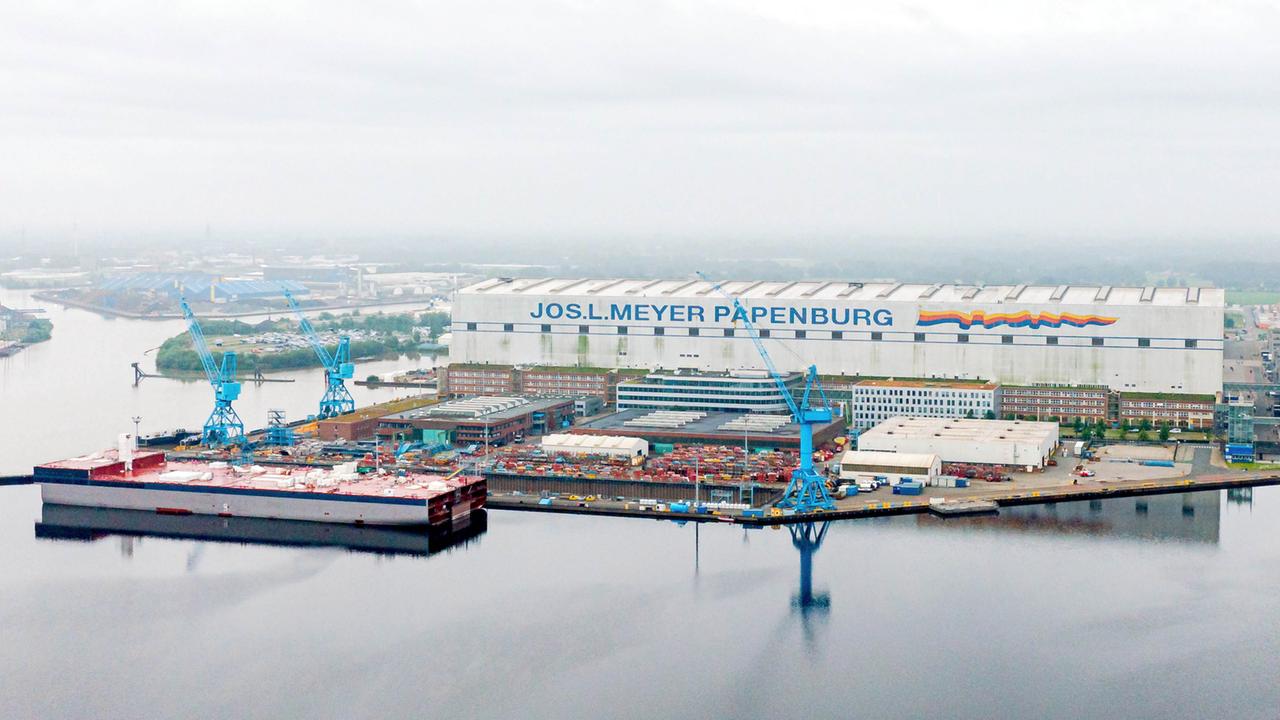Due to high energy and raw material prices, Meyer Werft slipped into a crisis. Chancellor Scholz promised help to save the company. Now the Bundestag and the Lower Saxony state parliament have approved the plans for state participation.
The Bundestag's budget committee has cleared the way for the rescue of the ailing Meyer Werft. The Papenburg-based company is known for its cruise ships, but is in a financial crisis that threatens its existence.
The budget makers in Berlin agreed that the federal government can contribute the planned 200 million euros to the stabilization. A further 200 million are to come from the state of Lower Saxony. After the Bundestag, the Budget and Finance Committee in the Lower Saxony state parliament also voted in favor of the state stepping in. Now the final details have to be clarified before everything is put in writing in the next few days. A solution should be in place by Sunday at the latest.
Federal and state governments cover 80 percent
The federal government, together with Lower Saxony, wants to take over around 80 percent of the shares. The Meyer family, the owners, will temporarily hold around 20 percent in the coming years before being given a kind of buyback option. There is no fixed exit date for the state's participation.
In addition, both the federal government and the state want to provide guarantees of around one billion euros each to secure loans. Meyer Werft must raise more than 2.7 billion euros to finance new ship construction by the end of 2027. According to the Federal Ministry of Economics, the state support will be state aid-free, i.e. without the need for EU approval.
17,000 jobs directly and indirectly affected
The reason for the crisis is not a lack of orders, but rather contracts for new ships that were signed before the coronavirus pandemic and do not provide for any adjustment to the sharp rise in energy and raw material prices since then. In addition, in the industry, 80 percent of the construction price is usually only paid when the ship is delivered – so the shipyard has to finance the construction with loans.
The SPD recently stressed that it wanted to secure thousands of jobs in the structurally weak Emsland region. According to federal information, around 17,000 jobs depend directly and indirectly on the shipyard, including suppliers and service providers. More than 3,000 employees work at the Papenburg site alone.




